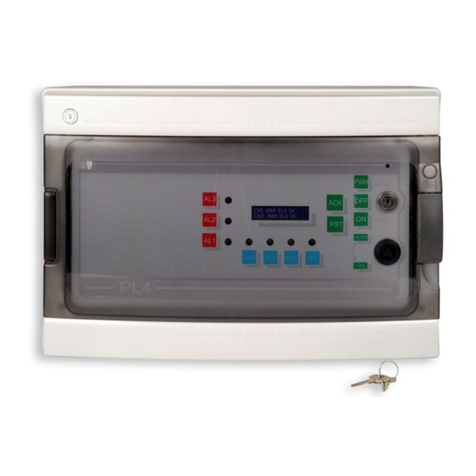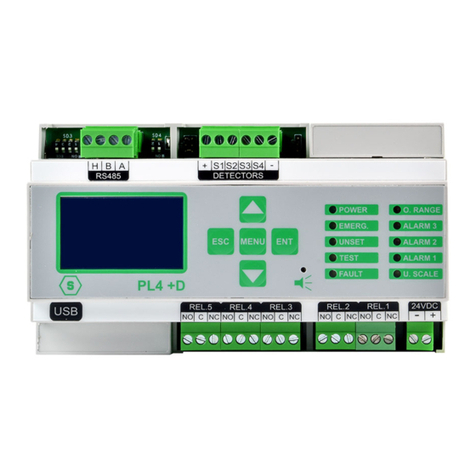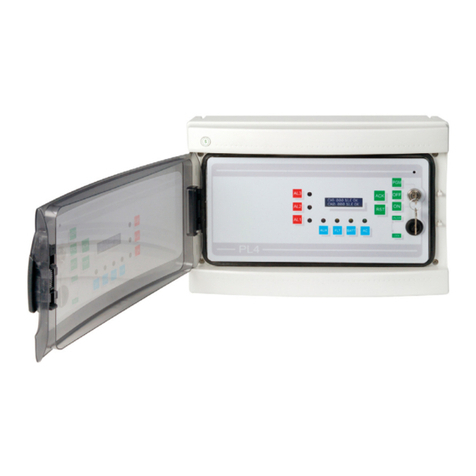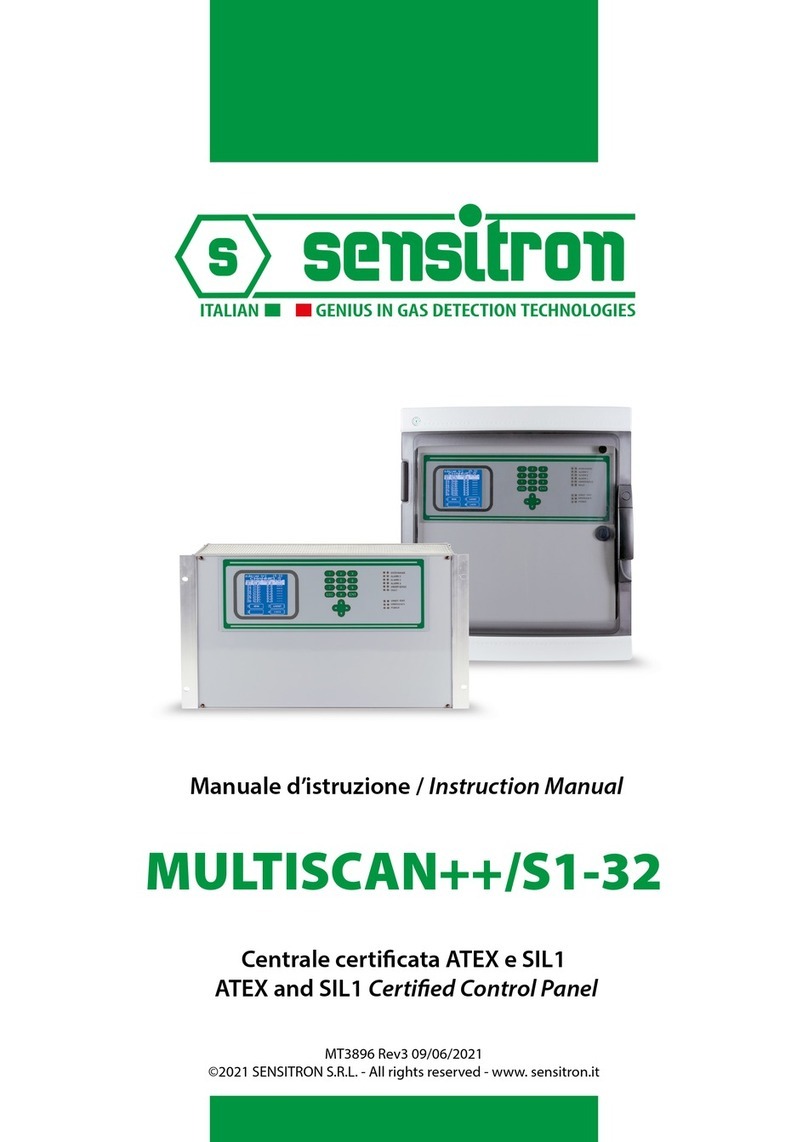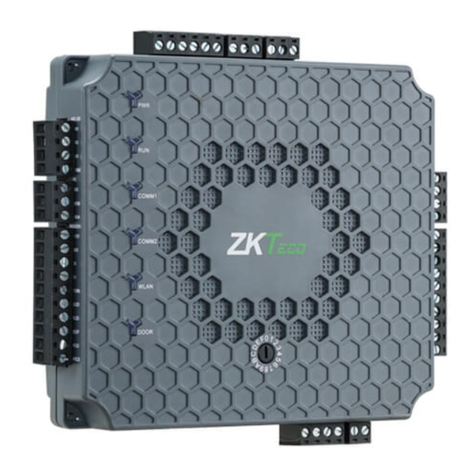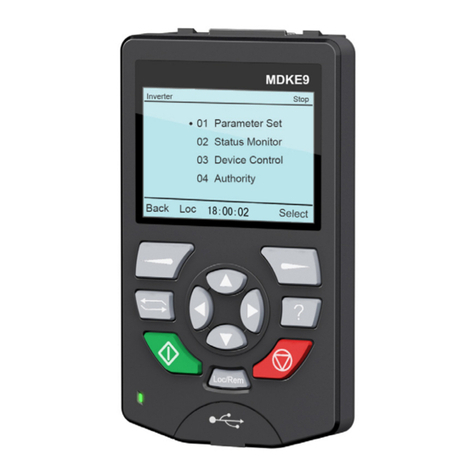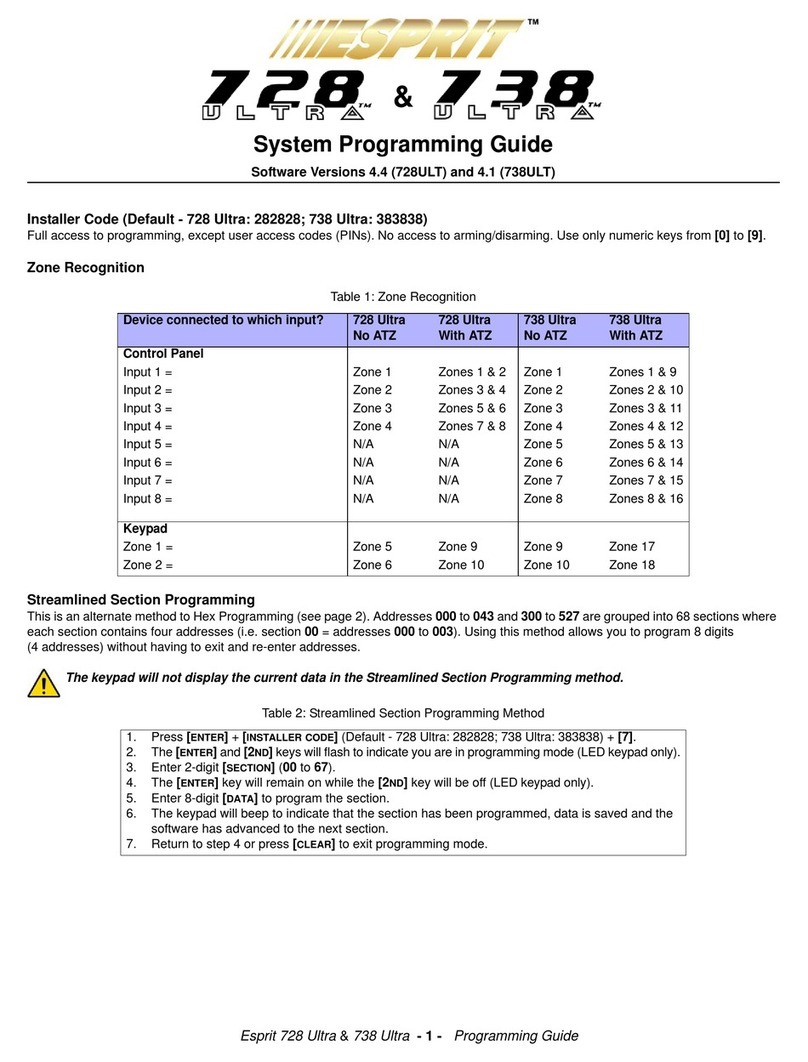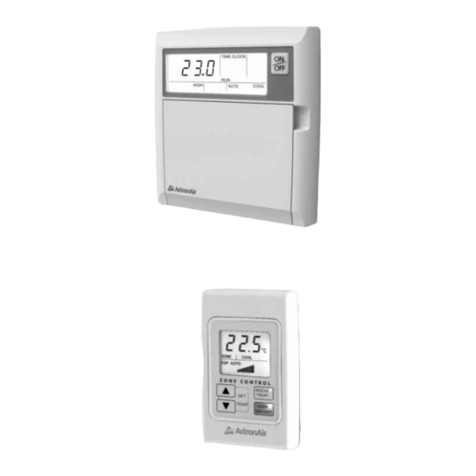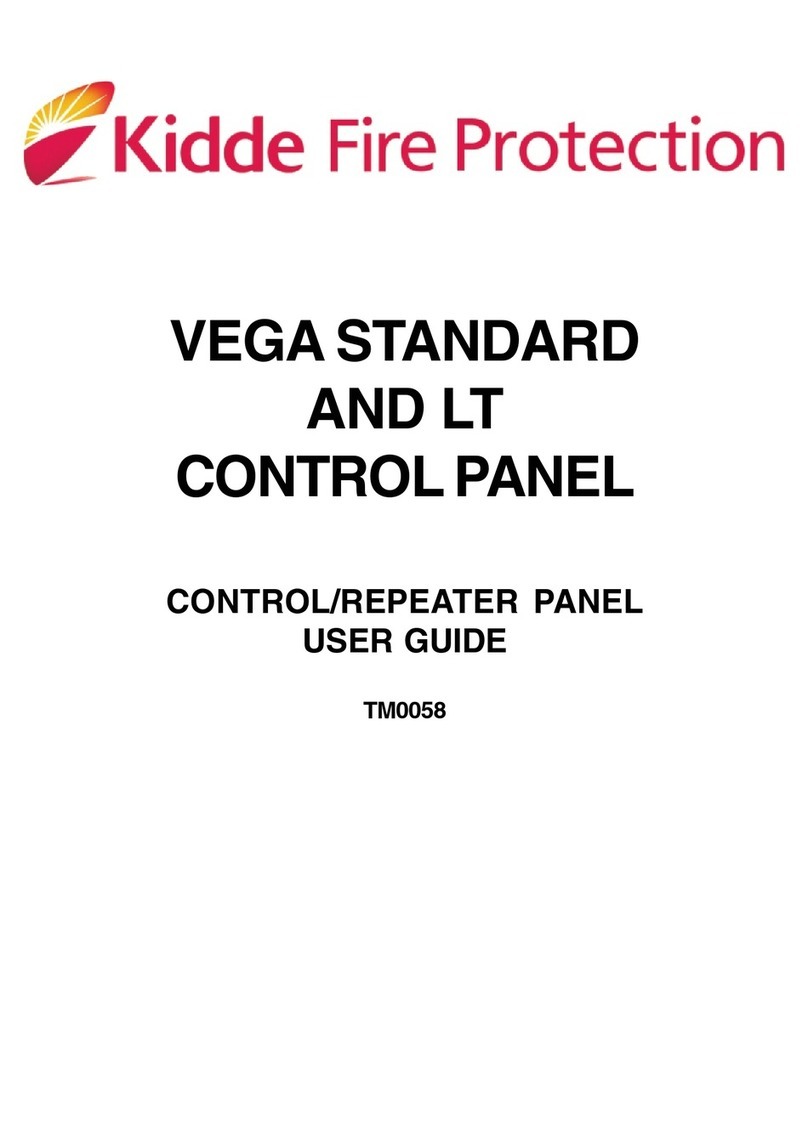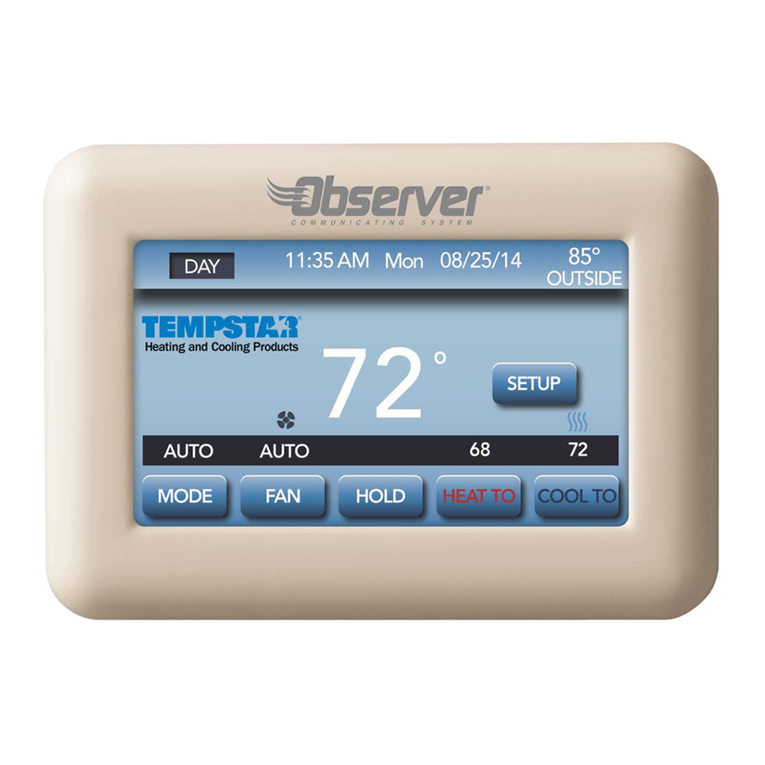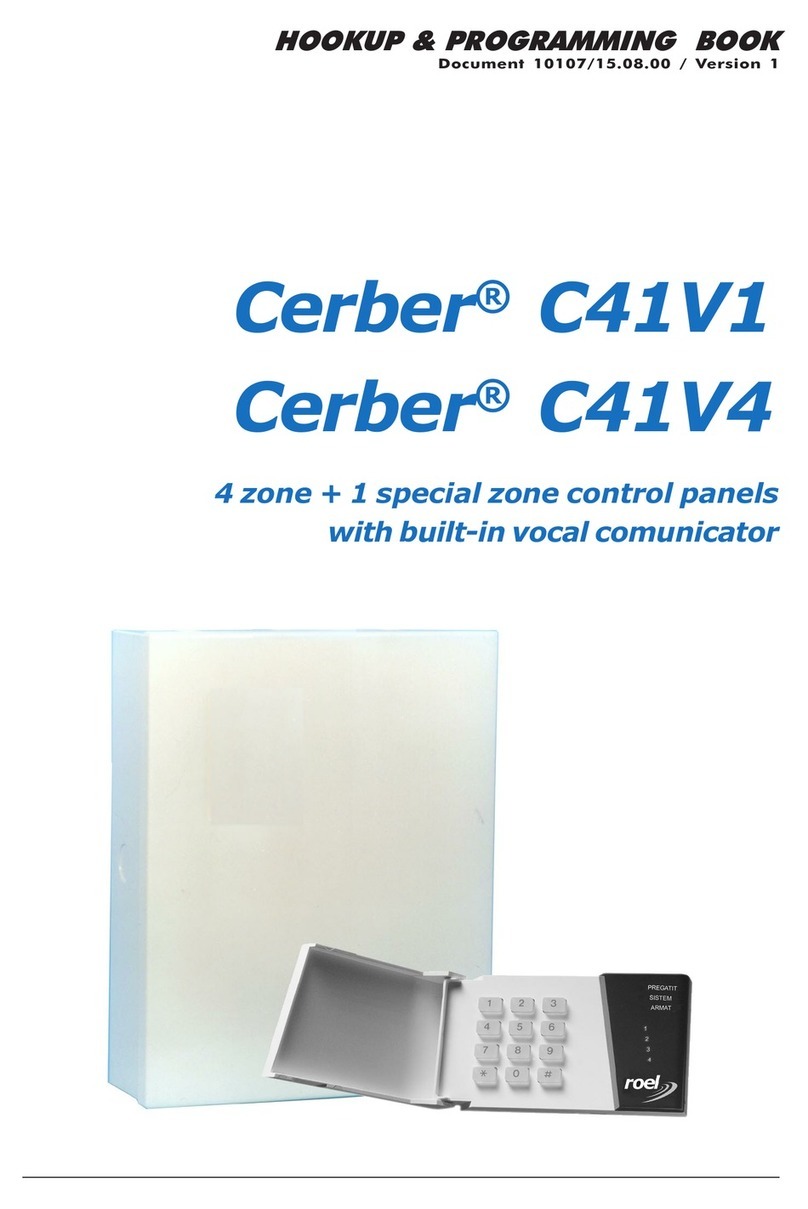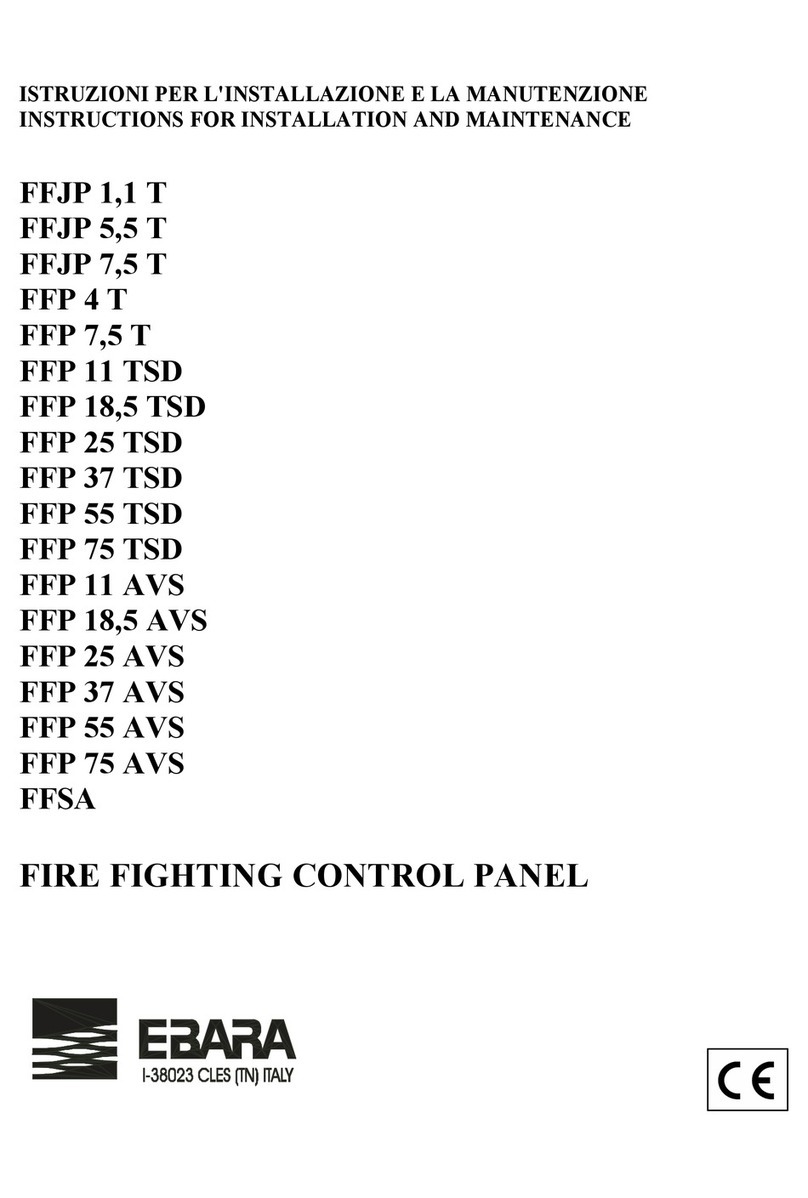Sensitron MULTISCAN++/S1-16 Guide

MT4061E Rev.2 15/10/2019 Pagina 1 di 45
MULTISCAN++/S1-16
ATEX and SIL 1 certified
INSTALLATION AND USE
MANUAL
SENSITRON S.r.l. Viale della Repubblica, 48
20010 CORNAREDO MI - Italy
Tel: + 39 02 93548155 Fax: + 39 02 93548089

Technical Manual MULTISCAN++S1/16
MT4061E Rev.2 15/10/2019 Pagina 2 di 45
Warning
THIS MANUAL MUST BE CAREFULLY READ BY ALL PERSONS WHO HAVE OR
WILL HAVE THE RESPONSIBILITY FOR INSTALLING, USING OR SERVICING THIS
PRODUCT.
Like any equipment, this product will perform as designed only if installed, used and
serviced in accordance with the manufacturer’s instructions. OTHERWISE, IT COULD
FAIL TO PERFORM AS DESIGNED AND PERSONS WHO RELY ON THIS PRODUCT
FOR THEIR SAFETY COULD SUFFER SEVERE PERSONAL INJURY OR DEATH.
The warranties made by Sensitron s.r.l. with respect to this product are voided if the
product is not installed, used and serviced in accordance with the instructions in this
user guide. Please protect yourself and others by following them.
We recommend our customers to write or call regarding this equipment prior to use or
for any additional information relative to use or repair.

Technical Manual MULTISCAN++S1/16
MT4061E Rev.2 15/10/2019 Pagina 3 di 45
THIS TECHNICAL MANUAL DESCRIBES THE PRODUCT
IN ITS COMPONENTS, THE INSTALLATION AND THE
OPERATION OF THE SYSTEM. THE CONFIGURATION
SOFTWARE IS NOT INCLUDED, SO PLEASE REFER TO
THE PROPER MANUAL.

Technical Manual MULTISCAN++S1/16
MT4061E Rev.2 15/10/2019 Pagina 4 di 45
INDEX
1) INTRODUCTION................................................................................................................................... 5
1.1) SYSTEM BLOCK DIAGRAM.................................................................................................................. 6
1.2) TECHNICAL SPECIFICATIONS.............................................................................................................. 6
2) INSTALLATION.................................................................................................................................... 7
2.1) MOUNTING AND ELECTRICAL CONNECTIONS....................................................................................... 7
2.1.1) DIAGRAM AND PART IDENTIFICATION........................................................................................... 8
2.1.2) LAYOUT MAIN BOARD................................................................................................................. 9
2.1.3) POWER SUPPLY CONNECTIONS ................................................................................................ 10
2.1.4) DIP SWITCH SETTING FOR THE RS485 BUS,PC COMMUNICATION AND CONTROL PANEL LANGUAGE
10
2.2) FIELD DEVICE CONNECTIONS........................................................................................................... 11
2.2.1) DETECTORS CONNECTION ....................................................................................................... 12
2.3) STG/IN8-S REMOTE INPUT MODULE................................................................................................ 17
2.1) STG/OUT16-S REMOTE OUTPUT MODULE ...................................................................................... 18
2.1.1) STG/8REL RELAY EXPANSION BOARD ..................................................................................... 19
2.1.2) STG/IN8-S AND STG/OUT16-S MODULE ADDRESSING............................................................ 19
2.1.3) DETECTOR IDENTIFICATION...................................................................................................... 21
2.2) PROGRAMMING BY PC.................................................................................................................... 21
3) SYSTEM POWER UP AND OPERATION.......................................................................................... 22
3.1) POWER ON.................................................................................................................................... 23
3.2) SYSTEM STATES AND OPERATION.................................................................................................... 24
3.2.1) SYSTEM STATES...................................................................................................................... 24
3.3) USER LEVELS................................................................................................................................. 28
3.3.1) OPERATOR LEVEL.............................................................................................................. 29
3.3.2) MAINTENANCE LEVEL.......................................................................................................... 30
3.3.3) ENGINEER LEVEL ................................................................................................................. 30
3.4) MENU DETAILS........................................................................................................................... 30
3.5) 1- MENU....................................................................................................................................... 30
3.5.1) ACTIVE EVENTS.................................................................................................................. 31
3.5.2) EVENT LOG.......................................................................................................................... 33
3.5.3) PRINT................................................................................................................................... 35
3.5.4) SYSTEM INFO...................................................................................................................... 36
3.6) 2-LOGOUT................................................................................................................................... 37
3.7) 4-LOGIN....................................................................................................................................... 37
3.8) 3-SYSTEM ................................................................................................................................... 38
3.8.1) ZONES.................................................................................................................................... 38
3.8.2) MODULES ............................................................................................................................... 40
3.8.3) RELAY OUTPUTS ..................................................................................................................... 40
3.8.4) DETECTORS (CHANNELS)........................................................................................................ 42

MT4061E Rev.2 15/10/2019 Pagina 5 di 45
1) INTRODUCTION
The MULTISCAN++S1/16 is a gas control unit designed to offer the widest range of flexibility
required by the market.
The control panel is based on a powerful microprocessor which provides a wide range of self-
diagnostic procedures to detect and locate possible faults.
Extremely flexible and reliable, it can manage up to 24 detectors, 8 directly connectable to the
panel and 16 gas detectors on the 2 serial lines the panel comes complete with.
The detectors can be either of addressable type, directly connected on buses, or 4-20mA
analogical types connected via 8-input STG/IN8-S remote modules.
System architecture also includes 6 on-board relays and the possibility to expand outputs up to
32 using remote STG/OUT16-S modules and 8-relay boards.
Three alarm thresholds to be set for each detector. The alarm threshold activation mode
changes according to the type of gas detection profile chosen and the detectors connected.
The unit is housed in a plastic box complete with 27 Vdc 4 A power supply.
Summary table of the devices that can be connected to the various MULTISCAN++S1/16 unit
versions.
Panel type
Number of
serial bus
Detectors
max
number
Outputs
max
number
ST.G/IN8-S
Max number
ST.G/OUT16
Max number
Notes
MULTISCAN++S1/16
2 open or 1
closed
16+8(*)
32+6(*)
2
2
(*) channels enclosed in the panel
Other features:
•Event log can be displayed on the screen or downloaded to a PC.
•RS232 serial port for PC connection for programming and control via specific software.
•Parallel port for printer connection.

MT4061E Rev.2 15/10/2019 Pagina 6 di 45
1.1) System block diagram
BUS 1
BUS 2
(1)
(4)
(3)
(2)
(5)
(6)
(4)
(1) RILEVATORI GAS ANALOGICI 4-20 mA / 4-20 mA ANALOG GAS DETECTORS
(2) MODULO 8 INGRESSI ANALOGICI ST.G/IN8-S / ANALOG 8 INPUT MODULE
ST.G/IN8-S
(3) CAVO2 FILI TWISTATIPER Rs485 + 2 FILI PER ALIMENTAZIONE (12-24 Vdc) /
2 TWISTED WIRES FOR THE Rs485 BUS + 2 WIRES FOR THE POWER SUPPLY (12-24 Vdc)
(4) RILEVATORI GAS CON USCITASERIALE Rs485 / GAS DETECTORS WITH Rs485 OUTPUTS
(5) MODULO 16 USCITE O/C ST.G/OUT16 / 16 O/C OUTPUTS MODULE ST.G/OUT16
(6) MODULO 8 RELE’ ST.G/8REL / 8 RELE’ ST.G/8 REL MODULE
16 O/C
MULTISCAN ++ S1/8 CONTROL PANEL
E’ possibile realizzare il sistema con
1 BUS aperti oppure 1 BUS chiuso
It is possible to make the system with
2 open BUS or 1 closed BUS
Fig. 1.1) System block diagram
1.2) Technical specifications
Technical specifications
Housing:
Plastic box IP65 dim. L.470, H.426, D.148 mm.
Inputs:
Max. 16 detectors with RS485 communications connected on the bus directly or by 4-20
mA via STG/IN8 S modules + 8 inputs 4-20mA transmission available aboard the panel
Outputs:
6 relays on the unit + 32 Open Collector outputs on STG/OUT16-S modules (optional
STG/8REL relay board)
Relay Contact rating
8 A at 250 Vac
Optional ST.G/8REL relay
contact rating
16A at 250Vac
Serial ports:
2 x RS485)
1 x RS232 (PC connection)
Network connection
Optional TCP/IP module
Power:
100-120 Vac or 200-240 Vac selectable on the power supply via switch
Absorption:
Max 10 VA
Warm-up time:
Settable from 2 to 10 min. (default 3 min.)
Display:
Liquid crystal display (LCD)
Optic indications:
Double row of 9 leds
Working temp.
0/-55°C
Storage temp.
-20 ÷ +60 C°
Working RH:
15-85% (non condensed)
Storage RH
5-85% (non condensed)

MT4061E Rev.2 15/10/2019 Pagina 7 di 45
2) INSTALLATION
2.1) Mounting and electrical connections
After opening the transparent unit door, also open the front panel by rotating the black lock to
UNLOCK.
Remove the 4 screws at the 4 corners of the box and remove the front part of the unit box.
Holes can now be drilled in the back of the box for wire passage.
We recommend you use an IP65 wire clamp at wire entrance to maintain the same protection
level as the unit.
Secure the back of the unit to the wall using the holes (D) or by the enclosed brakets.
Fig. 2.1 a) Control panel box
Dimensions (mm): A 470, B 426, C 380, D 312, E 128, F 148, G 14, H 125, I 75, L 50, M 48, N
98, O 41
Connect the tri-polar mains wire to the power supply terminal board (minimum 1.5mm2
per pole) and secure it with the specific wire clamp.
Power the unit and, next, connect the red and black tipped faston wires to the 2 x 12 V 7
Ah max lead buffer battery power supply.

MT4061E Rev.2 15/10/2019 Pagina 8 di 45
Vac
Power Supply
+-
BATTERIES
Fig. 2.1 b) Power supply
2.1.1) Diagram and part identification
Box version
1
2
3
4
5
6
78
1- Power Supply (27 Vdc 4A)
2- 2 x 12V 7Ah batteries (not included)
3- RS232 serial port (PC connection)
4- RS485 serial boards
5- Relay outputs (8)
6- 8 detectors 4-20 mA inputs
7- Bus RS485 bus connections
8- Panel main board
Fig. 2.1.1) Unit diagram and part identification

MT4061E Rev.2 15/10/2019 Pagina 9 di 45
2.1.2) Layout main board
+
+-
-
ingressi analogici 4-20mA
4-20mAanalog inputs
digital input
(not used)
Usciterelè/ relayoutputs
123456
D3 switch es: Control panel la nguage
Language
English
Italian
Spanish
Portoguese
Sw4 Sw3 Sw2 Sw1
ON OFF OFF OFF
OFF
OFF
OFF OFF
ON ON ON
ON ON ON
ON
ON
ON
ON
OFF ON
ON OFF ON
ON OFF OFF
OFF
ON
German
French
Slovenian
Dip switchsettaggio (vedi tabella)
Setting switches (seetable) Rs232
for PC
Rs485
line 1
Rs485
line 1
Rs485
line 2
NC
C
NO
NC
C
NO
NC
C
NO
Fig. 2.1.2) Layout main board

MT4061E Rev.2 15/10/2019 Pagina 10 di 45
2.1.3) Power supply connections
27,6 Vdc/ 4 A power supply
+
-
100-120 Vac
200-240 Vac
Earth
110 220
select the
input voltage
110/220V is selected by switch
Before power ON please check
Input voltage avoiding damage
Selezionare 110/220V con
lo switch all’interno. Verificare
prima di dare alimentazione,
per evitare danneggiamenti.
Scheda centrale
Control panel main board
Fig. 2.1.3) Main board power supply connection
2.1.4) DIP switch setting for the RS485 bus, PC communication and control
panel language
The series of SD2 dip-switches must be set for:
•Communication (baud rate and protocol) for unit compatibility with various gas
detector versions and IN / OUT modules.
•Communication (baud rate) of the RS232 serial port for the communication with
the PC
The SD3 dip switch series is for set the language text of the control panel display.
Note: the dip switch state is acquired at the control panel switch ON
Dip switch settaggio (vedi tabella)
Setting switches(see table)
Non usato / Not used
D 3 switches: Control panel language
Language Sw1Sw4 Sw3 Sw2
English
Italian
Spanish
Portuguese
German
French
Slovenian ON
OFFON
ON
ON
ON
ON
ON
ON
ON
ON
ON
ON ON
ON
ON ON
OFF OFF
OFF
OFF
OFF OFF
OFF OFFOFF
OFF OFF
Fig. 2.1.4) Dip-switch SD2 and SD3

MT4061E Rev.2 15/10/2019 Pagina 11 di 45
Dip-switch 1: Baud Rate Bus RS485
Positione
Velocità comunicazione bus
Detector and Module compatibility
ON
115.200
Smart “S” gas detectors and ST.G/IN8-S /
ST.G/OUT16-S modules
OFF
9.600
Smart “3G” gas detectors and ST.G/IN8-S /
ST.G/OUT16-S modules
Dip-switches 2 and 3: RS485 bus communications protocol
Sw 2
Sw 3
Protocollo
Compatibilità Rilevatori e
Moduli
Note
ON
ON
Galileo
Smart “S” gas detectors and
ST.G/IN8-S / ST.G/OUT16-S
modules
Baud Rate 115.200
OFF
ON
IDI
Old SMARTIDI,SMART3CCand
CDdetectors.OldSTG/IN8and
STG/OUT16 modules.STG/IN8-N
and STG/OUT-16-N modules
Baud rate 9600
ON
OFF
Modbus
SMART3G gas detectors;
STG/IN8-S and STG/OUT16-S
modules
Baud rate 9600
(if SMART3G detectors are
not connected to the bus,
115.200 Bps can be set
(switch 1))
OFF
OFF
Configurazione non usata
Dip-switch 4 and 5: Communication (baud rate) of the RS232 serial port for the
communication with the PC
Sw 4
Sw 5
Baud Rate
ON
ON
9600 Bit/sec.
OFF
ON
19200 Bit/sec.
ON
OFF
38400 Bit/sec.
OFF
OFF
115200 Bit/sec. (default)
Dip-switches 6 and 7: not used
Dip-switch 8: restore default settings
Position
Function
ON
When turned on, restores unit default settings
OFF
Normal position
2.2) Field device connections
The unit has 2 RS485 data buses connected to field gas detectors. The 2 serial buses can be
used in "open" mode or "closed" (1 loop). The choice is set during programming with the PC
software.
On the serial lines it is possible to connect the gas detectors (these can be daisy chained on the
bus, if detectors are equipped with the RS485 interface, or via remote 8-input modules
STG/IN8-S with 4-20 mA transmission type) and the output modules STG/OUT16-S.
The length of each serial line is maximum 1000 mt.

MT4061E Rev.2 15/10/2019 Pagina 12 di 45
4 conductors are required for device connections: 2 for the RS485 serial bus and two for power
supply. For this reason, two different wires must be used or a single wire that has suitable
characteristics, described below.
-) The RS485 serial bus must be connected with an EIA RS 485 connection wire: No. 2
conductors with 0.22/0.35 mm2section + shield (TWISTED PAIR). Nominal capacity between
conductors < 50 pF/m, nominal impedance 120 ohm. Total line length with this type of
connection must not exceed 1.000 meters. An example of a recommended wire is a BELDEN
9841 or similar wire (EIA RS485 data transmission wire). Only connect detectors (and IN and
OUT modules) in cascade. Avoid tree or delta connection since they reduce interference
immunity.
-) Detector power supply (and IN and OUT modules on the bus) must be connected with a 2-
core wire with adequate section based on the number of connected devices, their distance from
the power supply and each device’s consumption (please see the technical manual enclosed
with gas detectors for this purpose).
Each device connected on the unit's RS485 bus must have its own univocal address. STG/IN8-
S and STG/OUT16-S address settings are described later in this manual. See the manual of
the detector for its address settings.
2.2.1) Detectors connection
Gas detectors can be connected to the MULTISCAN++S1/16 control panel in two
different ways, based on the detector output signal.
1) 4-20 mA analogue proportional output.
The detector connected to the unit and ST.G/IN8 S modules will send a 4-20 mA signal
referring to its range (i.e. 0-300 ppm, 0-30 ppm, 0-100% LEL etc.) and the unit, suitably
programmed, will display the relevant gas concentration indication measured by the
detector and consequently activate the alarms when the set values are reached.
2) RS485 digital proportional output
The detector connected to the unit will send a data signal on the RS485 line. This signal
is referring to its range (i.e. 0-300 ppm, 0-300 ppm, etc.) and the unit, suitably
programmed, will display the relevant gas concentration indication measured by the
detector and consequently activate the alarms when the set values are reached.

MT4061E Rev.2 15/10/2019 Pagina 13 di 45
Detectors with 4-20mA output
Detectors with 4-20mA analog output are connected to the unit via remote 8-input modules
STG/IN8-S. The modules are connected on the panel's bus to be field mounted far from the
control panel.
A 4-20mA transmitter requires a 3-core wire for connections: 2 wires for power supply (usually
12 to 28 Vdc but refer to the gas detector technical manual) and one wire for the 4-20mA signal.
A 3x0.75mm2shielded wire is recommended since it can cover a 100 m distance between the
gas detector and STG/IN8-S input module.
Detectors with 4-20 mA output directly connected to the unit
+
12345678 -
+
-
Control panel main board
+-SDet. 1
Det.2
Det.6
Det.8
Fig. 2.2.1 a) Connection of the 8 detectors of the control panel
The following diagram explains connections between a 4-20mA gas detector and a STG/IN8-S
input module. When starting the system, make sure minimum 12Vdc voltage reaches each gas
detector.
-V
I8
I7
I6
I5
+V
-V
I4
I3
I2
I1
+V
-V
B
A
+V
REMOTE INPUT
MODULE ST/G.IN8
(+V) (-V)
(S)
Positive
Negative
4-20 mA
signal
4-20 mA
analog
gas
detector
Rilevatore
analogico
4-20 mA
MODULO INGR.
4-20 mA ST/G.IN8
Fig. 2.2.1 b) Connection of the 8 detectors of the ST.G/IN8-S module

MT4061E Rev.2 15/10/2019 Pagina 14 di 45
Detectors with RS485 output
Detectors with RS485 digital outputs are directly connected to the RS485 bus.
4 wires are required in this type of connection: 2 for the RS485 serial bus and 2 for
device power supply. For this reason we suggest you use two different wires or a single
wire with suitable features as described below.
-) The RS485 serial bus must be connected with an EIA RS 485 connection wire: No. 2
wires with 0.22/0.35 mm2section with shield (TWISTED PAIR). Nominal capacity
between conductors < 50 pF/m, nominal impedance 120 ohm. Total line length with this
type of connection must not exceed 1,000 metres. An example of a recommended cable
is a BELDEN 9841 or similar wire (EIA RS485 data transmission wire). Only connect
detectors (and IN and OUT modules) in cascade. Avoid tree or star connections since
they reduce interference immunity.
-) The power supply to the detectors (and IN and OUT modules on the bus) must be
connected with a 2-core wire with adequate section based on the number of
connected devices, their distance from the power supply and each device’s
consumption (please see the technical manual enclosed with gas detectors for this
purpose).
Note: each detector connected on the RS485 line must have its own univocal address between
1 and 255 (247 for the ModBus protocol). Please see the gas detector technical manual for
address settings.
The following diagram explains the bus connection of gas detectors and remote
STG/IN8-S or STG/OUT16-S modules to the control panel.

MT4061E Rev.2 15/10/2019 Pagina 15 di 45
Scheda centrale / panel main board
+ - A B
+ - A B
+ - AB
+ - A B
+ - A B
+-
+-
+-
+-+-
+-
+
-
A
B
Dalla centrale o dall’alimentatore ausiliario remoto
From the control panel or from the remote auxiliary power supply
Cavo twistato / schermato 2x022 (Belden 9841 o equivalente)
Twisted / shielded 2x0,2 cable (Belden 9841 or equivalent)
Bus 1
Bus 2
Al rilevatore o modulo
successivo
To the next detector
or module
Come Bus1
As Bus1
Fig. 2.2.1 c) RS485 bus devices connection (Open bus)

MT4061E Rev.2 15/10/2019 Pagina 16 di 45
Scheda centrale / panel main board
+ - A B
+ - AB
+ - AB
+ - A B
+ - A B
+-
+-
+-
+-+-
+-
+
-
Dalla centrale o dall’alimentatore ausiliario remoto
From the control panel or from the remote auxiliary power supply
Cavo twistato / schermato 2x022 (Belden 9841 o equivalente)
Twisted / shielded 2x0,2 cable (Belden 9841 or equivalent)
Bus1
B
B
A
A
Bus2
Fig. 2.2.1 d) RS485 bus devices connection (Closed bus)

MT4061E Rev.2 15/10/2019 Pagina 17 di 45
2.3) STG/IN8-S remote input module
STG/IN8-S remote modules are field mounted and are connected to the panel via
RS485 buses. They are used to connect 8 x 4-20mA analog gas detectors. Each
module must be addressed using the rotary switches on the PCB. The address must be
univocal and between 1 and 255. For the maximum number of modules, see the table at
chapter. 1- Introduction
Jumper da non manomettere
/ jumpers not to be touched
Jp1
Jp2
Jp3
Jp4
Jp9
Jp11
Jp12
Jp14
Closed 1-2
Closed
Closed
Open Open
Open
Closed 1-2
Led
DL1: Guasto WD /WD Faul
DL2: TX Data
DL3: RX Data
DL4: RTS
Jp10 Resistenza di file linea
(EOL resistor)
Se il modulo è l’ultimo della linea chiudere Jp10
/ If the module is the last of the bus line, close JP10
A
B
Rs485 serial line
Morsettiera alimentazione e linea seriale
(Power supply and serial line)
Jp13 Communication Baud Rate setting:
Closed 115.000 bps (Multiscan++ control panel
Open 9.600 bps (old Galileo Multiscan control panel)
Jp13 Settaggio velocità comunicazione:
Chiuso 115.000 bps (Centrale Multiscan ++)
Aperto 9.600 bps (vecchia centrale Galileo Multiscan)
Commutatori rotativi
per l’indirizzo del modulo
Channels 5-8 Channels 1-4
-V +V-V +V
Morsettiera rilevatori
(gas detector connections)
Open
Rotary switches for
the module address)
Fig. 2.3) ST.G/IN8-S module

MT4061E Rev.2 15/10/2019 Pagina 18 di 45
2.1) STG/OUT16-S remote output module
STG/OUT16-S remote modules are field mounted and connected to the panel via RS485 buses.
They provide 16 Open Collector outputs (negative switch) with programmable functions to
remotely trigger Sirens, Solenoid valves, Relays, etc. Each STG/OUT16-S module can be
connected to up to 2 boards of 8 relays that convert the Open Collector output to a powerless
exchange contact.
Each module must be addressed using the rotary switches placed on the PCB. The address
must be univocal and between 1 and 255 (1-247 for the Modbus protocol).
For the maximum number of modules, see the table at chapter. 1- Introduction
Morsettiera alimentazione
e linea seriale
(Power supply and serial line)
Commutatori rotativi per
l’indirizzo del modulo
Jp13 Communication Baud Rate setting:
Closed 115.000 bps
(Multiscan++ control panel
Open 9.600 bps
(old Galileo Multiscan control panel)
Jp13 Settaggio velocità comunicazione:
Chiuso 115.000 bps
(Centrale Multiscan ++)
Aperto 9.600 bps
(vecchia centrale Galileo Multiscan)
Led
DL1: Guasto WD /WD Faul
DL2: TX Data
DL3: RX Data
DL4: RTS
Resistenza di file linea
(EOL resistor)
chiudere s
close i
è l’ultimo della linea /
f the module
is the last of the bus line
e il modulo
-V +V -V
Morsettiera uscite O/Ci
(O/C output connections)
Outputs 9-16 Out 1-8
A
B
Rs485 serial line
Collegamento scheda relè (opzionale)
/ Relay board connection (optional)
Jumper da non manomettere
/ jumpers not to be touched
Jp5
Jp6
Jp7
Jp8
Jp9
Jp11
Jp12
Closed 1-2
Closed
Closed
Open
Open
Open
Open
Rotary switches
for the module address
+V
+V
+V
Esempio di collegamento relè
Example of relay connection
Fig. 2.4) STG/OUT16-S module

MT4061E Rev.2 15/10/2019 Pagina 19 di 45
2.1.1) STG/8REL relay expansion board
The STG/8REL 8-relay expansion board converts STG/OUT16-S O/C outputs into voltage free
changeover contact. Up to two relay boards can be connected to each output module. A relay
board is directly connected to the output module (J1 connector) and a second relay board is
connected to the first.
Esempiocollegamento
/ Connectionexample
Fig. 2.4.1) Relay board connection to the output module
2.1.2) STG/IN8-S and STG/OUT16-S module addressing
STG/IN8-S and STG/OUT16-S modules are addressed using the two rotary switches in
RSW 1 and 2 hexadecimals. Rotary switches permit hexadecimal settings (base 16).
Each switch as 16 positions (0-F) and the pointer is positioned on the number chosen
using a screwdriver to create a decimal value between 1 and 255 (see table 1).
For the maximum number of modules, see the table at chapter. 1- Introduction.
Each module must have univocal address in the system. Dual addresses are not
permitted even if modules are on different serial buses.

MT4061E Rev.2 15/10/2019 Pagina 20 di 45
Example:
Se i due commutatori sono posizionati come sopra, RSW2 su 0 ed RSW1 su D, l’indirizzo
corrispondente in decimale è 13 (vedi tabella 1)
If the address switches are set in this manner, RSW2 at 0 and RSW1 at D, the corresponding address in
decimal number would be 13 (see table 1).
Tabella1: Conversione da decimale ad esadecimale
Table 1: Conversion from decimal to hexadecimal numbers
DEC
HEX
DEC
HEX
DEC
HEX
DEC
HEX
DEC
HEX
DEC
HEX
DEC
HEX
1
01
38
26
75
4B
112
70
149
95
186
BA
223
DF
2
02
39
27
76
4C
113
71
150
96
187
BB
224
E0
3
03
40
28
77
4D
114
72
151
97
188
BC
225
E1
4
04
41
29
78
4E
115
73
152
98
189
BD
226
E2
5
05
42
2A
79
4F
116
74
153
99
190
BE
227
E3
6
06
43
2B
80
50
117
75
154
9A
191
BF
228
E4
7
07
44
2C
81
51
118
76
155
9B
192
C0
229
E5
8
08
45
2D
82
52
119
77
156
9C
193
C1
230
E6
9
09
46
2E
83
53
120
78
157
9D
194
C2
231
E7
10
0A
47
2F
84
54
121
79
158
9E
195
C3
232
E8
11
0B
48
30
85
55
122
7A
159
9F
196
C4
233
E9
12
0C
49
31
86
56
123
7B
160
A0
197
C5
234
EA
13
0D
50
32
87
57
124
7C
161
A1
198
C6
235
EB
14
0E
51
33
88
58
125
7D
162
A2
199
C7
236
EC
15
0F
52
34
89
59
126
7E
163
A3
200
C8
237
ED
16
10
53
35
90
5A
127
7F
164
A4
201
C9
238
EE
17
11
54
36
91
5B
128
80
165
A5
202
CA
239
EF
18
12
55
37
92
5C
129
81
166
A6
203
CB
240
F0
19
13
56
38
93
5D
130
82
167
A7
204
CC
241
F1
20
14
57
39
94
5E
131
83
168
A8
205
CD
242
F2
21
15
58
3A
95
5F
132
84
169
A9
206
CE
243
F3
22
16
59
3B
96
60
133
85
170
AA
207
CF
244
F4
23
17
60
3C
97
61
134
86
171
AB
208
D0
245
F5
24
18
61
3D
98
62
135
87
172
AC
209
D1
246
F6
25
19
62
3E
99
63
136
88
173
AD
210
D2
247
F7
26
1A
63
3F
100
64
137
89
174
AE
211
D3
248 (*)
F8
27
1B
64
40
101
65
138
8A
175
AF
212
D4
249 (*)
F9
28
1C
65
41
102
66
139
8B
176
B0
213
D5
250 (*)
FA
29
1D
66
42
103
67
140
8C
177
B1
214
D6
251 (*)
FB
30
1E
67
43
104
68
141
8D
178
B2
215
D7
252 (*)
FC
31
1F
68
44
105
69
142
8E
179
B3
216
D8
253 (*)
FD
32
20
69
45
106
6A
143
8F
180
B4
217
D9
254 (*)
FE
33
21
70
46
107
6B
144
90
181
B5
218
DA
255
(**)
FF
34
22
71
47
108
6C
145
91
182
B6
219
DB
35
23
72
48
109
6D
146
92
183
B7
220
DC
36
24
73
49
110
6E
147
93
184
B8
221
DD
37
25
74
4A
111
6F
148
94
185
B9
222
DE
(*) Indirizzi non disponibili con protocollo Modbus / not available addresses for the Modbus protocol
(**)Indirizzo non disponibile con protocollo Galileo / not available addresse for the Galileo protocol
Table of contents
Other Sensitron Control Panel manuals
Popular Control Panel manuals by other brands
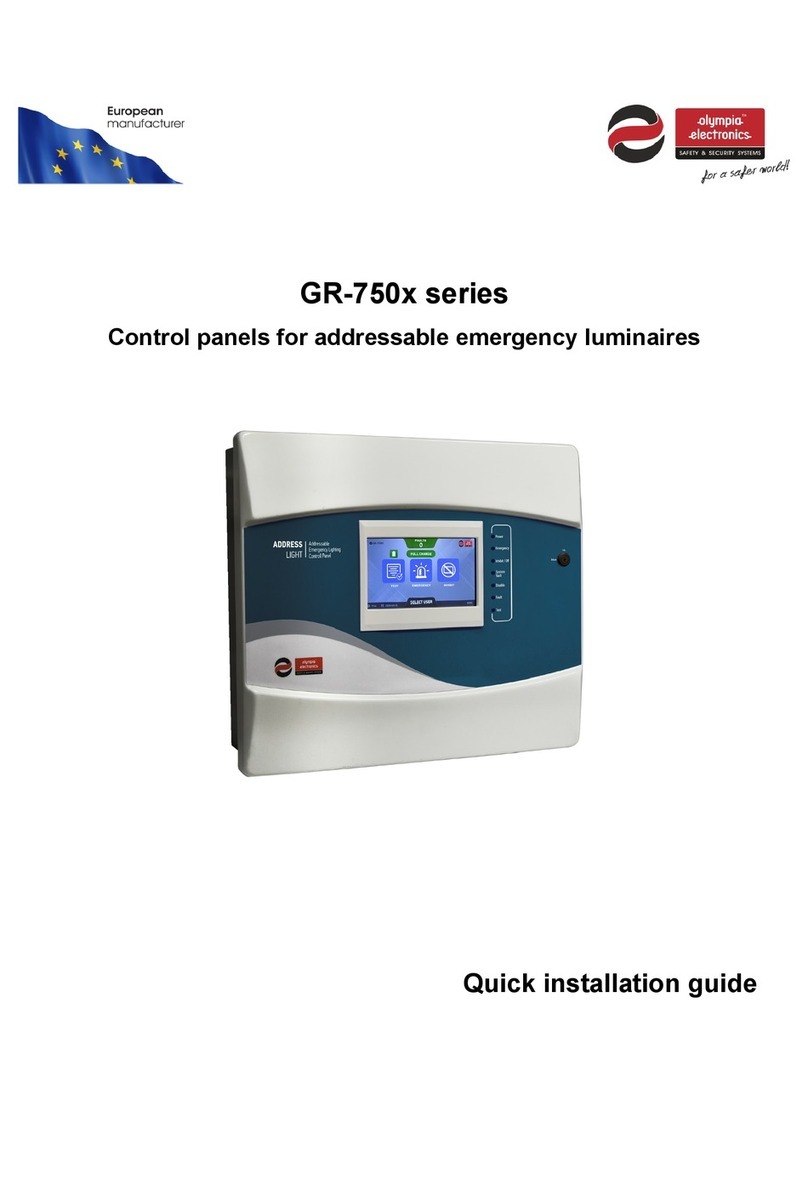
olympia electronics
olympia electronics GR-750 Series Quick installation guide
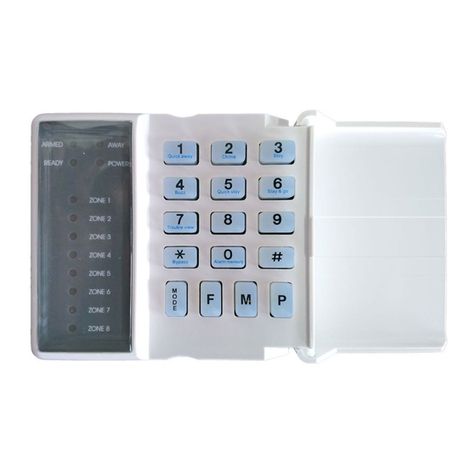
IDS
IDS 805 Training manual
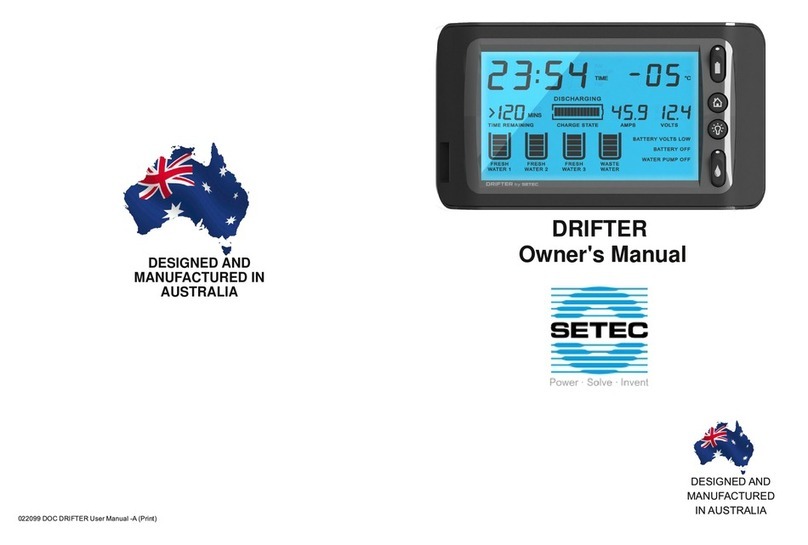
Setec
Setec DRIFTER owner's manual
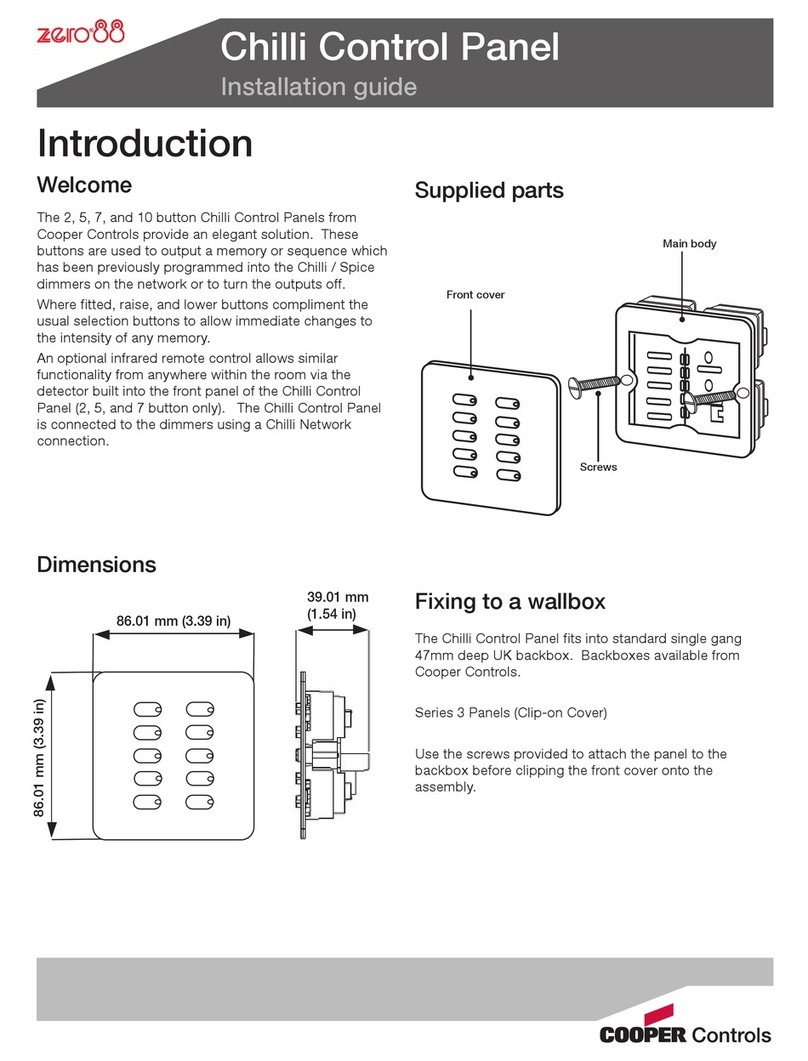
Cooper Controls
Cooper Controls 2 Chilli Control Panel installation guide

Global Fire Equipment
Global Fire Equipment Junior V4 Operation & maintenance manual

Simplex
Simplex MINIPLEX 4100ES Series manual
